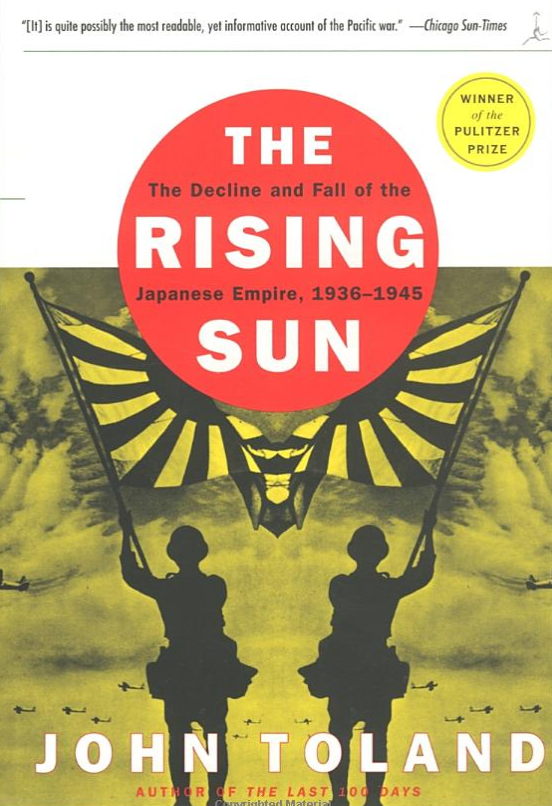It’s fun (and sometimes disturbing) to trace how you end up down some rabbit holes. I recently read Japan’s Infamous Unit 731: Firsthand Accounts of Japan’s Wartime Human Experimentation Program by Hal Gold. Illuminating and horrifying. Horrifying in the sense of mass murder and torture, not necessarily in the current vernacular that might depict the trauma of receiving the wrong flavor latte from your barista or even having been micro-aggressed against by a suspicious glance or an unkind word. (Yes, if you’re already triggered, then you may choose to move on to another blog that reinforces your preferred victim status and protects your hyper-sensitive, undeveloped ego – oblivious to the historical perspective and perpetrated atrocities that make our current civil discord and tantrums look petty, childish and imminently self-absorbed in comparison to millennia of misery throughout human history. Buckle up, because this is the real sh*t.)
As background to the Unit 731 pursuit, my brother-in-law, Nate, and I frequently engage in interesting (if not darker) conversations about history, cycles of Empire, economy, politico-social currents and the like… with more meaningful reach than your present-day circus performances of political theatrics, media hysteria and general societal psychopathology. In recent months he had loaned me his copy of John Toland’s The Rising Sun: The Decline and Fall of the Japanese Empire, 1936-1945. At 875 pages, however, I chose to audio-book that one on my commutes and dog walks. Well worth the time investment for the historically curious, particularly if imperial and military histories interest you. That book’s journey opened up other tangents of discussion and inquiry.
The path led me to read The Rape of Nanking: The Forgotten Holocaust of World War II by Iris Chang. Now, I’m not hating on the maligned Japanese, per se. There’s plenty of disruption, death and destruction to be found at the hands and in the dark crevices of governments the world over – the US and her allies certainly being no exception. The Japanese history discussed here is just my most recent trail of exploration, particularly engaging to me because I knew nothing about either the destruction of Nanking and her population or biological warfare experimentation.
On the basis of victim count, the Nanking Chinese and their compatriots were far exceeded numerically by German atrocities of the era, however, the Japanese were no less brutal. In some aspects, perhaps the Asian counterparts, on a prisoner per capita basis, surpassed the racism, de-humanization, hatred, vengeance and blood-thirst perpetrated by the Germans upon their perceived lessers, the unclean, the “cockroaches.” While emaciating concentration camps and homicidal gas “showers” cannot be considered benevolent in any sense, the Japanese were arguably more skilled individually in personalized and ongoing violence, rape, torture and mass murder of their enemies. The Japanese soldiers were likely more directly involved in their nation’s atrocities, lacking the well-developed systems and machinery of their ally’s mass incarceration, starvation and murder, which may have permitted the German soldiers more of a depersonalized distancing from their deeds – both physical and psychological.
On to Unit 731. In the Japanese military’s quest to reduce its own soldiers’ battleground illnesses and wound complications, it sought to better understand pathogenic microorganisms, like the Vibrio species that spreads cholera in contaminated drinking water. In that endeavor, military leaders recognized the opportunity to turn those pathogens on its enemies – both civilian and military – by weaponizing these pathogens into biologic warfare (BW) systems. To scale these techniques to the genocidal levels necessary to have military impact required research. Accurate research on the pathogenicity, efficacy and delivery of deadly microorganisms apparently required human experimentation on a large scale. One of the primary investigative BW bodies of the Japanese military was the secret Unit 731.
Headed and populated by the nation’s top medical scientists and physicians, Unit 731’s research included using political and war prisoners, and at times entire unsuspecting Chinese villages, for experimentation, pathogen inoculation, gassing, water torture, bayonet practice, BW bombing, starvation, water and food contamination, vivisection (dissection of the living – with or without anesthesia – until dead), frostbite experiments until skin and tissue fell from the bone,….
The term that the staff used for their human study material referred to inanimate objects, specifically wood logs – “maruta.” Incinerators disposed of the logs after their usefulness was expended. Maruta were not permitted to survive. If they happened to live through an experiment, other research would be carried out on them until they did not.
Many of the experiments of Unit 731 centered on culturing bacteria and viruses for cholera (V. cholerae), typhoid fever (Salmonella typhi), plague (Yersinia pestis), Shigella dysenteriae, and viral hemorrhagic fevers (of multiple etiologies). Insects and rodents (particularly fleas and rats) were bred as pathogen vectors. For instance, plague was spread among some Chinese and Soviet areas by dropping bombs filled with plague-infested fleas. As another example, dogs fed with diseased pork were infected with cholera and unleashed in populated areas where they would vomit and expel diarrhea. Other dogs and animals would eat the vomit and spread the disease, ultimately contaminating people directly as well as infiltrating the human water supply.
The number of victims of these BW experiments and operations is unknown but can only be guessed to be well into the tens or hundreds of thousands. It has been claimed that as many as 20 million were killed in these programs and attacks. In a single account in the book, one army captain testified that a two-week cholera mission he was involved in resulted in the death of 20,000 Chinese.
The author, Hal Gold, estimated that the personnel involved in Unit 731 and its similar outfits numbered in the 20,000 range. These would include not only the well-trained medical and scientific staff, but many military and civilian support staff, to include university students and vocational trainees. Part of the servicing of these staff was providing the males with access to “comfort women” – usually of Chinese or Korean origin. These coerced, and typically prisoner status, prostitutes formed a well-established system of brothels, not only for keeping the staff satisfied, but they also served as sources of research for venereal disease – particularly syphilis. It is documented that the offspring of prisoner females were used in human research, as well.
In August 1945, as Japan surrendered to the WWII Allies who were at the cusp of physically occupying their island country, the facilities of experimentation units were destroyed in their retreat – along with any remaining prisoner-witnesses. The US government (including military leadership and the presidency) was aware of the war crimes committed by the Japanese military in its BW and torture programs. However, at the end of WWII, the US and the Soviets were already engaging in the developing Cold War, positioning themselves in this next power struggle.
The US was complicit in covering up these Japanese war crimes for its own benefit. Its leadership wanted the research knowledge from the experiments, as well as the secret intelligence that the Japanese held on the Soviets. It was also adamant in keeping this data and power out of the possession of the Soviets who wanted the Japanese military leaders to face war crimes tribunals. The US government denied the Soviets that information, publicity and justice in order to pursue its own interests. Those war criminals were granted immunity and were ultimately integrated into Japan’s medical, academic and government leadership.
For myself, my interest in this type of history is multi-fold. It is important to understand the mistakes, lies, abuses, power plays and victimizations of the past in order to recognize, expose and hopefully abort in early stages any similar trends in the present and future. Institutions of power and secrecy cannot be trusted to operate to the benefit of humanity. I appreciate this observation from the author: “Anyone familiar with life in a bureaucracy – especially a large and ponderous one – realizes that a large part of its total energy is expended to protect and enhance individual members’ own roles in the organizational machinery.” He might have added: “… to the detriment of human beings and society.”
Additionally, historical perspective SHOULD encourage today’s population to better appreciate the comforts, food, shelter and safety that few of our forebears could have known or imagined. While many today decry the injustices and inequalities of their existence, may we put into appropriate perspective our current state juxtaposed with the often miserable, tortured and murderous history of humankind. May we value, preserve and improve upon this progress through our own work, reading, self-education, demanded transparencies and civil discourse.



